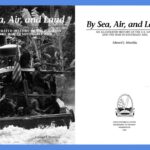Wider Car Tires: ALL Pros and Cons
Some people prefer using wider tires in their car as opposed to skinny tires fitted by the manufacturer. As it is a common belief that wider tires provide more road traction and a smoother riding experience. Many people choose wide tires over skinnier ones just because of their better looks.
But in this article, we’ll cover all pros and cons of wider tires. so, that if you have any misconceptions about wide tires, they might get clear.
| Wider Tires | |
| Pros | Cons |
| Better Road Grip | Harder Steering |
| Improved Cornering Stability | More Fuel Consumption |
| Short Braking Distance | Short Life Span |
| Looks Good | Slow Acceleration |
| Comfortable Rides | Poor Snow Traction |
| High Cost | |
| Can Damage Suspension |
Wider Tires: Pros
- Improved Road Grip of Dry Roads: The first and foremost benefit of replacing narrow tires with wider ones is the improved dry road traction. As it is no hidden fact that wider tires offer a higher surface area that contacts with the ground. Due to more rubber hitting the road, the overall grip of the vehicle is improved. It also has a positive impact on the handling of the car. You’ll feel a lot sturdier and smoother while riding in your car.
Also read: Low Profile Tires for Off-Roading: Pros and Cons
- Cornering Stability: The tires of the car are fitted on a certain camber angle. This angle is critical while you’re taking sharp turns. If this angle is out of smaller than usual than your car might experience difficulties while taking a turn. The wider tire in addition to increasing the road grip positively impacts the camber angle of the tire. Wider tires enable your vehicle to turn with ease.
- Enhanced Braking Performance: The braking distance of the car is highly dependent on the force of friction between tire and road. The force of friction is primarily dependent upon two factors:
- Surface area in contact
- Pressure Force
By using wider tires the area of contact between road and tire is increased and as a result force of friction is increased. The force of friction is a good thing in this case but if it exceeds a certain limit, it can have a negative effect. We’ll discuss those in cons of wider tires. But here in this scenario, the increment of frictional force increases the braking traction and improves braking performance as well. The braking distance of a vehicle is reduced considerably if you use wider tires.
- Looks Better: This isn’t an actual benefit but if you’re into good-looking cars then a wide tire might look attractive to you. The wider tires give enough leeway to tread designers to create better patterns. These patterns not only do the job well but also look good.
- Comfortable Riding Experience: Wider tires can control wobbling and vibrations to a certain extent. You would know the real worth of these tires while traveling on bumpy roads. The wider tread acts as a shock absorber and doesn’t make you feel trembled. The wider tires are a good option if you’re into highly comfortable cars.
Wider Tires: Cons
- Harder Steering: It is true that wider tires offer better traction but they can hurt the steering capability of your car during this process. The wider tire can hinder the turning of your car. The wider tread means the carload is distributed on a larger surface area. Now the steering wheel has to combat more frictional force. As a result, the steering of wider tires can get harder.
- More Fuel Consumption: The wider tires can decrease the mileage of your car. Again the culprit is increased force of friction between road and tires. The car draws more power from the engine to beat this frictional force. As a result, fuel consumption is increased.
- Short Life Span: People might think wider tires have a longer life span, but this is not true. Wide tires have load distributed over a larger surface area. This larger area is rubbed against the road and tread is consumed more rapidly. Hence, wider tires have a shorter life span in comparison to narrow tires.
Also read: Are Cheap Tires Worth it? Are They Safe?
- Slow Acceleration: The curse of the increased force of friction can take a real test of your patience. As this might also slow down your car. Wider tires can often give you a feeling of sluggish acceleration.
- Poor Snow Traction: Icy and snowy roads offer a lesser force of friction as compared to dry roads. Here, pressure force is more critical than the area of contact. The pressure force i.e. force per unit area of wider tires is less than that of narrow tires. As a result, they have reduced snow traction.
- High Cost: Wider tires have more rubber and more weight. Due to this, they are costlier to buy. A wider set of tires can cost approximately $200 to $300 more as compared to narrow tires.
- Suspension Damage: If you install wider tires than those recommended by the manufacturer, chances are that you would be doing so at the cost of your suspension. To fit in wider tires, the suspension will take the hit and you might lose thousands of dollars in suspension repairs.
Also read: 10 Car Brands that Rust the Most (Don’t Buy Them)
Who are Wide Tires for?
Vehicles that are designed to beat the 200 mph mark in terms of top speed are the best candidates for wider tires. All the benefits of wider tires such as improved dry road traction, better cornering stability, enhanced braking capability, and smoother driving experience are the utmost needs of a car operating at a higher speed.
Wider tires are generally recommended for better sports performance. Supercars with high speeds usually employ wider tires for improved road traction at higher speeds. When express sports cars are operating at speeds in excess of 200 mph then there is a need for enhanced road traction. Otherwise, chances are that the car might tip or roll over. So, such special purpose vehicles which are designed for superior performance and racing tracks make use of wide tires.
Trending Video: How to Easily Bring Back to Life any Old Car Battery and Save Tons of Money (click to watch)
One might argue that why cons of wider tires don’t affect the decision of their placement in sports cars. The reason behind this is the fact that the pros of wider tires outweigh their cons for high-performing cars. Since the purpose of supercars is to achieve higher speeds on straight tracks, so they don’t have to steer around much. Hence the cons of harder steering don’t apply.
Similar is the case with more fuel consumption. High-performing cars have huge engines that already drain too much fuel. So a mile or two lost due to wider tires isn’t really a problem. Moreover, a million-dollar car owner wouldn’t mind a set of tires that is $200 costlier than the tire with an average width.
Snow traction isn’t a play with high-speed cars. As they are not designed for hilly tracks and snowy roads. Rather they fulfill the purpose of speed racing on dry and flat tracks. These are all the reasons why some cars can use wider tires over skinnier ones.
Also read: 3 Reasons Why Sports Cars Have Thin Tires
What Cars Have the Widest Tires?
The normal width of a car tire can vary between 200 and 250 mm, depending upon the size of the rim. But the high-performance sports cars are known to have tires width as high as 345 mm. if you’re wondering about what cars have the widest tires ever then the following list might intrigue you.
- Ferrari LaFerarri: 345 mm All Tires
- Koenigsegg One:1: 345 mm All Tires
- 2004 Ferrari Enzo: 345 mm All Tires
- Lamborghini Murcielago 2010 Roadster: 335 mm All Tires
- 2016 Dodge Viper ACR: 335 mm All Tires
- Chevrolet Corvette Z06: 335 mm All Tires
- Lamborghini Aventador SV: 335 mm All Tires
- Pagani Huayra: 335 mm All Tires
- 2006 Maserati MC12: 330 mm All Tires
- Porsche 918 Spyder: 325 mm Rear Tires
- 2018 Ford GT: 325 mm All Tires
- Porsche 911 GT3 RS: 325 mm All Tires
- Lamborghini Urus 2019: 315 mm All Tires
- McLaren P1: 315 mm Rear Tires
- Ferrari F12tdf: 315 mm All Tires
Read it: 10 Car Brands with the Cheapest Parts (Exact Costs)
Wide vs. Narrow Tires- What’s Better?
Tire width is a subjective matter. You must check for the recommended tire width by the manufacturer. As this number is the optimum value for tire width. It adds just the right amount of width to the tire to give it added stability, dry road traction, cornering stability, and comfortable rides. On the other hand, using this tire width minimizes the effect of cons like low fuel economy, hard steering, and speed accuracy.
So, the best way to decide the width of your car tires is to check out the width recommended by the car manufacturer. You can find it on a sticker on the pillar post of your car or inside the glove box compartment. For a car with normal day-to-day usage, tires with average width are way better than wide tires. As they are cheaper and provide better mileage. In addition to that, they don’t promote damage in associated suspension parts. Hence, hundreds of dollars in repairs are saved by opting for narrower tires.
But in the above section, it has been described in detail that how the pros of wider tires are helpful to some vehicles and the cons don’t matter. But supercars and sports cars referred to in that section are not normal use vehicles.
So, in my opinion, if you have to choose between wider and narrow tires, always go for narrower ones. They’ll last longer and help you stay within a budget.
References:
tiredeets.com, burtbrothers.com, tireget.com, driverknowledgetests.com, dunlopmotorcycletires.com, reddit.com, mycurtyre.com, nokiantyres.com, hotcars.com, tekdeeps.com, tiresandco.ca






